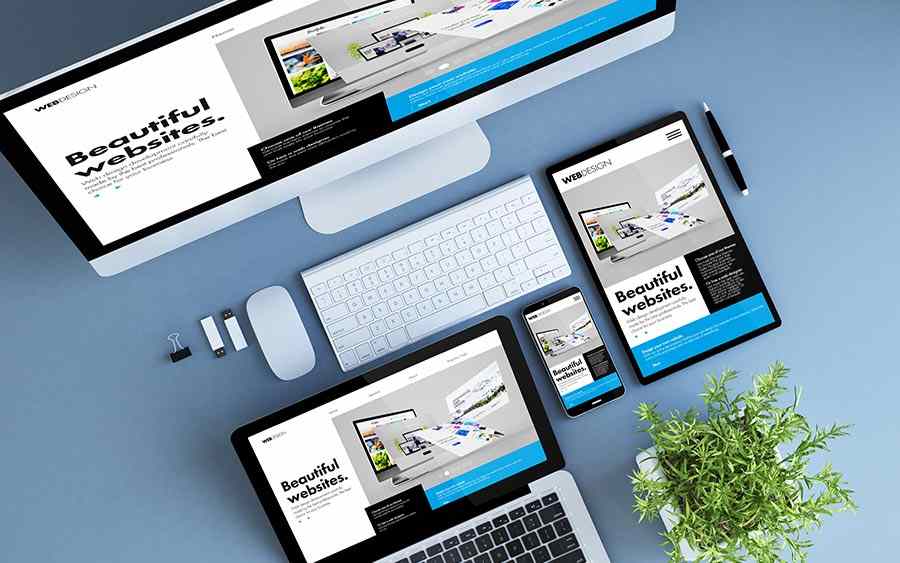Welcome to our blog post, where we deliver into the dynamic duo that is branding and web design! In today’s digital age, these two elements go hand-in-hand in creating a strong online presence for businesses. Whether you’re just starting out or looking to revamp your existing brand and website, understanding how they work together can give you a major advantage in the competitive online landscape. So let’s dive right in and explore the power of branding and web design working harmoniously to elevate your business to new heights!

Branding is not just about having a fancy logo or catchy tagline. It encompasses the entire identity of your business – who you are, what you stand for, and how you differentiate yourself from competitors. It’s the emotional connection that customers have with the brand that sets you apart in their minds.
At its core, branding is all about perception. It’s how people perceive your company, products, and services. A strong brand creates trust and credibility among consumers, making them more likely to choose your offerings over others.
To build a successful brand, consistency is key. Every touchpoint with your audience should reflect your brand values and personality consistently across various platforms – from social media posts to customer interactions.
A well-defined target audience is also crucial for effective branding. Understanding who your ideal customers are allows you to tailor your messaging and visuals specifically to resonate with them.
Branding helps establish an emotional connection between businesses and their customers. Successful brands evoke positive feelings and associations that keep customers coming back for more. So invest time in crafting a distinct brand identity that captures the essence of what makes your business unique!
Web design is the art and science of creating visually appealing and functional websites. It involves various elements such as layout, color scheme, typography, graphics, and user experience.
In today’s digital age, having a well-designed website is crucial for businesses to establish their online presence and attract potential customers. A good web design not only captures visitors’ attention but also ensures easy navigation and usability.
The layout of a website plays a significant role in providing a seamless user experience. A well-organized layout helps users find information easily without feeling overwhelmed by cluttered content or confusing navigation menus.
Color scheme selection is another essential aspect of web design. Colors evoke emotions and can convey messages about your brand identity. Choosing the right colors that align with your brand values can create an emotional connection with your audience.
Typography also plays a vital role in web design as it affects readability and overall aesthetics. Selecting appropriate fonts that are legible on different devices enhances the user experience while maintaining consistency across all pages.
Graphics, including images, videos, icons, and animations, add visual appeal to a website while conveying relevant information effectively. Using high-quality visuals that are optimized for fast loading times helps capture users’ attention quickly.
User experience (UX) focuses on creating websites that are intuitive to use and provide value to visitors. This includes optimizing page load speed, ensuring responsive design for different screen sizes/devices, and implementing clear calls-to-action buttons or forms for conversions.
Web design aims to create an engaging online presence that reflects the brand’s personality while delivering an exceptional user experience. With effective branding strategies combined with thoughtful web design elements like layout organization, color schemes, and typography, a business can build credibility, gain trust, and stand out from competitors
Branding and web design are two essential elements that work hand-in-hand to create a powerful online presence for businesses. When combined effectively, they can elevate a brand’s identity and drive success in the digital landscape.
Branding sets the foundation for web design. It encompasses the company’s values, mission, personality, and target audience. By defining these aspects clearly, designers can create a website that aligns with the brand’s essence. The visual elements such as color schemes, typography choices, and imagery should reflect the brand identity consistently across all platforms.
Web design plays a crucial role in conveying the brand message effectively. A well-designed website not only enhances user experience but also establishes credibility and trust among visitors. The layout should be intuitive and easy to navigate while maintaining an aesthetically pleasing appearance. Consistency in design elements throughout different pages helps reinforce the brand image.
Moreover, web design optimizes branding by ensuring responsiveness across various devices like smartphones or tablets. With more people accessing websites through mobile devices nowadays, it is imperative to provide an equally seamless experience on all platforms.
Furthermore, effective use of visuals such as images or videos alongside compelling content contributes significantly to enhancing brand engagement on websites. These elements should be strategically placed to captivate users’ attention while staying true to the established branding guidelines.
In conclusion (without using “in conclusion” explicitly), branding lays down the foundation while web design brings it to life digitally. They complement each other seamlessly when executed harmoniously – creating a cohesive online presence that resonates with audiences and drives business growth.
1. Define your brand purpose: Start by clearly defining the purpose and values of your brand. What sets you apart from competitors? Identify your target audience and understand their needs, desires, and pain points.
2. Develop a compelling brand story: Craft a unique narrative that tells the story of your brand’s journey, mission, and vision. Your story should resonate with your target audience and evoke emotions that connect them to your brand on a deeper level.
3. Create a memorable visual identity: Consistency is key when it comes to branding. Design a visually appealing logo, select an appropriate color palette that reflects the personality of your brand, choose fonts that are easy to read yet visually appealing, and develop visual elements such as icons or illustrations that align with your message.
4. Maintain consistency across all touchpoints: Ensure consistency in messaging, design elements, tone of voice, and overall experience across all platforms – be it website, social media channels, packaging, or promotional materials.
5. Engage with customers through storytelling: Use storytelling techniques to engage customers emotionally while conveying important messages about your products or services. Share customer success stories or testimonials that highlight how you have positively impacted their lives.
6. Be authentic in communication: Authenticity builds trust with customers; therefore always communicate honestly and transparently about who you are as a company – including both successes and failures.
7. Foster strong relationships through community engagement: Building relationships beyond transactions is crucial for long-term success; engage with communities relevant to your industry through events sponsorship or online interactions via social media platforms.
Remember that creating a strong brand identity takes time but will ultimately help differentiate yourself from competitors while resonating deeply with consumers who believe in what you stand for!
1. Keep it Simple and User-Friendly: When designing a website, simplicity is key. Avoid cluttered layouts, excessive text, and confusing navigation. Focus on creating an intuitive user experience that allows visitors to easily find what they’re looking for.
2. Responsive Design is a Must: In today’s mobile-driven world, your website must be responsive and optimized for different devices. Ensure that your design adapts seamlessly to different screen sizes and resolutions.
3. Consistent Branding Elements: Your web design should align with your brand identity. Use consistent colors, fonts, and imagery that reflect your brand’s personality across all pages of the website.
4. Speed Matters: Slow-loading websites are frustrating for users and can negatively impact search engine rankings. Optimize images, minimize HTTP requests, and utilize caching techniques to improve page loading speed.
5. Clear Call-to-Actions (CTAs): Guide visitors towards desired actions by incorporating clear CTAs throughout the site. Make sure they stand out visually and use compelling language to encourage action.
6. Visual Hierarchy: Arrange elements strategically to create a visual hierarchy on each page of your website. This helps users prioritize information effectively by emphasizing important content through size, color contrast, or positioning.
7. Well-Organized Content: Structure your content in a logical manner using headings, subheadings, bullet points, or numbered lists where appropriate. This makes it easier for users to scan through the information quickly while retaining its key messages.
8. Mobile Optimization: The majority of internet traffic now comes from mobile devices; therefore, it’s crucial that you optimize your website accordingly. Ensure easy navigation with larger buttons, texts, and forms as well as faster load times on smaller screens
In today’s digital age, branding, and web design have become essential components of a successful online presence. They work hand-in-hand to create a powerful and cohesive brand identity that resonates with your target audience.
Branding is all about creating a unique and memorable impression in the minds of consumers. It involves crafting a compelling story, defining your values, and establishing an emotional connection with your customers. A strong brand identity sets you apart from your competitors and builds trust among your audience.
Web design, on the other hand, focuses on the visual representation of your brand online. It encompasses everything from the layout and color scheme to typography and user experience. Effective web design not only captures attention but also provides a seamless browsing experience for users.
When branding and web design are combined effectively, they can elevate your business to new heights. Here are some tips for creating a strong brand identity:
1. Define Your Brand: Clearly articulate what sets you apart from others in your industry.
2. Develop Consistent Visuals: Use consistent colors, fonts, logos, and imagery across all platforms.
3. Craft Your Messaging: Create clear and concise messaging that reflects your brand values.
4. Engage with Your Audience: Interact with customers through social media or blog posts to build relationships.
5. Monitor Brand Perception: Regularly monitor how customers perceive your brand to make necessary adjustments.
And here are some tips for effective web design:
1. Simplify Navigation: Make it easy for users to find what they’re looking for on your website.
2. Optimize Load Times: Ensure fast loading speeds by optimizing images and minimizing code.
3. Retain Mobile Responsiveness: Design websites that look great on both desktops as well as mobile devices
4. Use High-Quality Visuals: Use high-quality images that reflect the essence of your brand
5. Provide Clear Call-to-Actions (CTA): Guide users towards desired actions with clear and enticing CTAs
By following these tips, you can create a strong brand identity and effective web design that will help your business stand out from the competition. For a free consultation feel free to call 1-916-358-6449.

A practical roadmap to integrating ADA standards with Web Development in Roseville for law firms

How Google decides top Rocklin legal websites and what attorneys should know about SEO Marketing Services in Rocklin

How Roofing SEO Services in Houston Boost Visibility With a Mobile-Friendly Website for Local Contractors

Get Website Development Services in Rocklin to boost leads for your Rocklin business today

How responsive web design Rocklin helps local businesses attract more nearby customers

7 Page-Speed Fixes a Website Designer in Roseville Uses to Lift Conversion Rates

D. Banerjee’s Guide to Website Design in Rocklin: What Your Site Needs to Rank